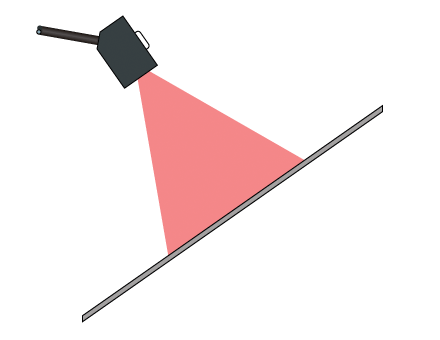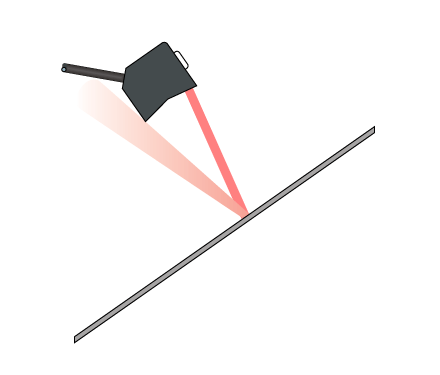100 Discovery Way, Unit 110, Acton, MA 01720 US.
Mon-Fri, 8:00 AM - 5:00 PM (GMT-5)
Detecting Objects Near a Background
Detecting a part as it moves near a background is a difficult sensing application. This is often encountered when attempting to use a photosensor to detect a part falling down a chute or passing on a conveyor. Ideally, you would detect the object from the side, but often times space constraints force you to sense the object from above. This can be challenging. Proper sensor selection is the difference between success and failure.
Doomed to Fail - Diffuse Reflective Photosensors
As the name implies, a diffuse reflective photosensor operates on the principle of reflectivity. The emitter sends out a cone-shaped field of
light perpendicular to the face of the sensor; and the sensor actuates when the receiver detects some of the emitted light reflected back.
They are one of the more popular sensors for detecting air ejected parts. For this reason, many users will attempt to use this sensor when detecting
objects moving near a background. Unfortunately, they are ill-suited for such an application.
The diffuse reflective photosensor is designed so that it will actuate when the receiver 'sees' only a small amount of the emitted light reflected back to it. This enables these sensors to detect small, fast moving, oddly-shaped targets (making them ideal for detecting air-ejected parts). Unfortunately, this attribute also causes the sensor to have difficulty detecting an object near a background without also picking up the background itself.

Diffuse reflective sensor can periodically "lock on" to the background, causing it to miss parts
With painstaking adjustment, it may be possible to get such an application working on the bench (barely), but when installed on a machine, the results are usually disappointing Any small change in the mounting angle, distance, or reflectivity of the background (when it gets coated with oil) can cause the sensor to 'lock on' to the background periodically, resulting in missed actuations and sensor failure errors (see the animation above).
Convergent Sensors are the best Choice
A convergent (or "V-Axis") sensor is also a reflective photosensor, but instead of transmitting light at 90° to the face of the sensor, the emitter is
angled toward the center axis of the sensor, with the receiver angled toward the same spot but from the opposite direction, so that the two beams converge at a
spot in front of the sensor. This sets up a V-shaped sensing beam that allows the sensor to detect objects in the area where the emitter beam and receiver
viewing area intersect.

Convergent photosensor can detect a part moving down a chute, without detecting the background
This beam arrangement also enables the sensor to 'ignore' anything outside of the area where the beams cross because when the emitter beam reflects of an object outside of the convergent area, it will miss the receiver.
The sensor is installed so that the background is beyond the convergent area, while the part to be detected will pass through the point where the emitter beam and receiver viewing area intersect.
© Copyright 2021 Wintriss Controls Group LLC - All Rights Reserved